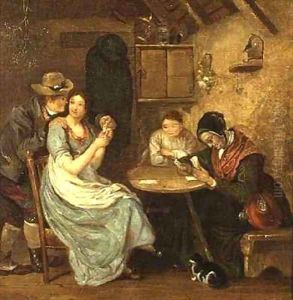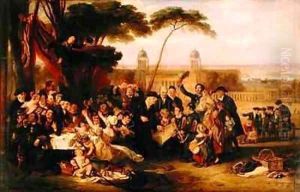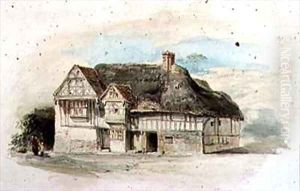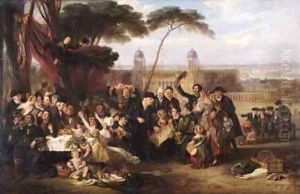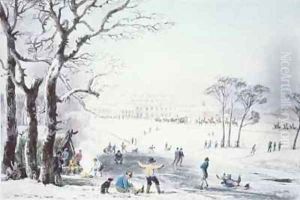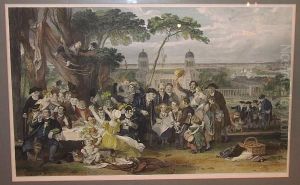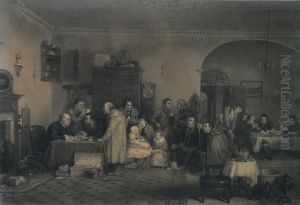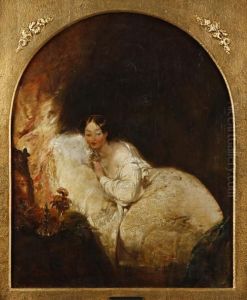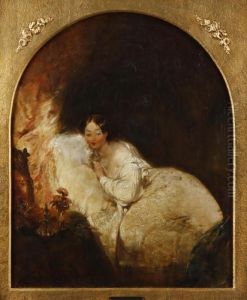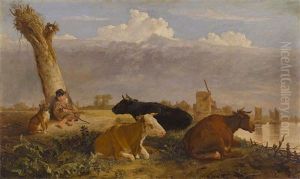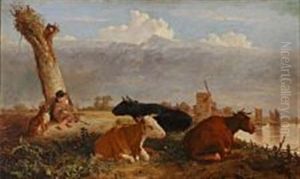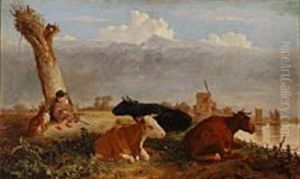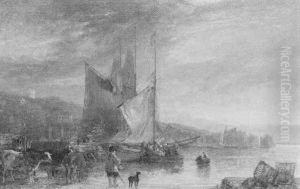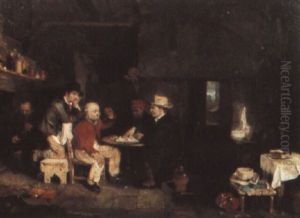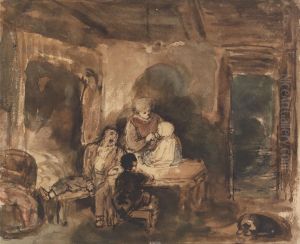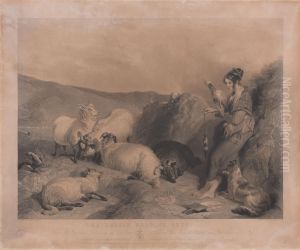John Burnet Paintings
John Burnet was a Scottish engraver and painter, known for his skills as a reproductive engraver and his works on art education during the 19th century. Born on March 20, 1784, in Fisherrow, Musselburgh, Scotland, Burnet was the son of an officer in the excise. From a young age, he showed an inclination towards art, which led to his initial training with the painter Alexander Nasmyth in Edinburgh.
Burnet's career began with a focus on engraving, which he quickly mastered. His skill in capturing the essence of the paintings he engraved brought him considerable fame. He moved to London in 1806, where he continued to develop his craft and began producing engravings of the works of notable painters such as J.M.W. Turner, with whom he developed a close professional relationship. His engravings after Turner's works helped to spread Turner's fame and also established Burnet as a prominent figure in the British art scene.
In addition to his engraving work, John Burnet was also an accomplished genre and landscape painter, although it was the former that truly solidified his reputation. His paintings, which often depicted everyday life and social scenes, were exhibited at the Royal Academy and other venues, earning him recognition as a talented painter in his own right.
Burnet was also an author of instructional books on art, which were widely used by students and amateurs. His texts, such as 'Practical Hints on Composition in Painting', 'Practical Hints on Light and Shade in Painting', and 'Practical Hints on Colour in Painting', were highly regarded for their clarity and practical advice. These books contributed significantly to art education in the 19th century and reflected Burnet's deep understanding of artistic techniques and his desire to share this knowledge with a broader audience.
John Burnet passed away on April 29, 1868, in London. His legacy is marked by his contributions to the field of engraving, his successful career as a painter, and his influential educational works, which continued to be referenced by artists and students long after his death.
